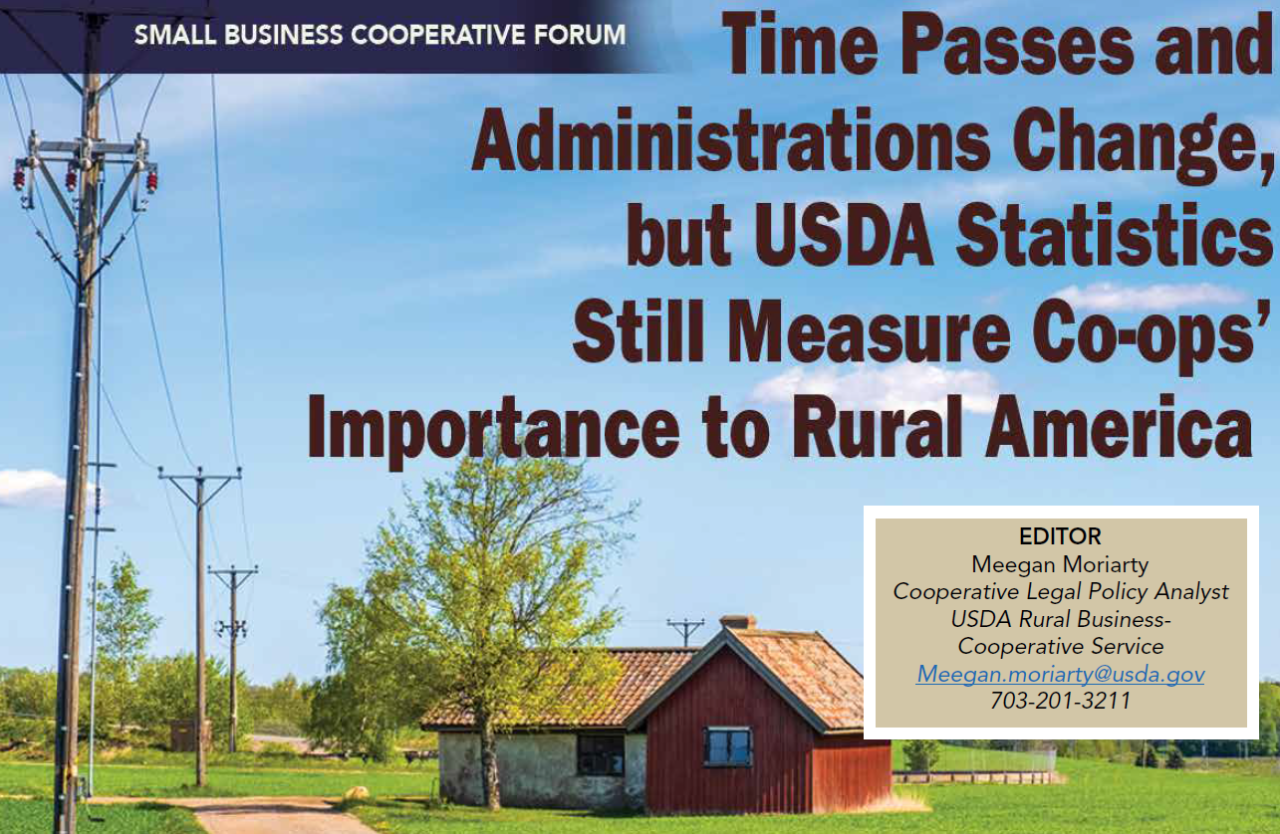
Time Passes and Administrations Change, but USDA Statistics Still Measure Co-ops' Importance to Rural America
Almost 100 years ago, Congress entrusted the U.S. Department of Agriculture (USDA) with keeping statistics on agricultural cooperatives. The Cooperative Marketing Act of 1926 (CMA) created a division to provide statistical, economic, financial, and other information. In fact, the Department started collecting United States farmer cooperative statistics at least as early as 1913; since the Department was established in 1862, diligent agriculture historians may be able to find earlier USDA-gathered co-op statistics. The current division, the USDA Cooperative Services Branch, maintains a spreadsheet that includes co-op statistics going back to 1913. The statistics provide information on the position and trends among the 1,647 agricultural cooperatives that respond to the survey and that have been found through research by Cooperative Services. The information is used for cooperative benchmarking, research, technical assistance, education, planning, and public policy. In addition to providing important financial and economic information about cooperatives, the statistics program generates several useful tools for the cooperative community and policymakers. For example, USDA maintains a directory of agricultural cooperatives that have consented to be included. The directory exists in a spreadsheet that lists farmer-owned marketing, farm supply, service, fishery, and bargaining cooperatives. The spreadsheet lists the cooperatives’ contact information, type, and products they sell or market. Cooperatives are asked to update their
information annually.
To view more of this article, please visit Connect Dashboard